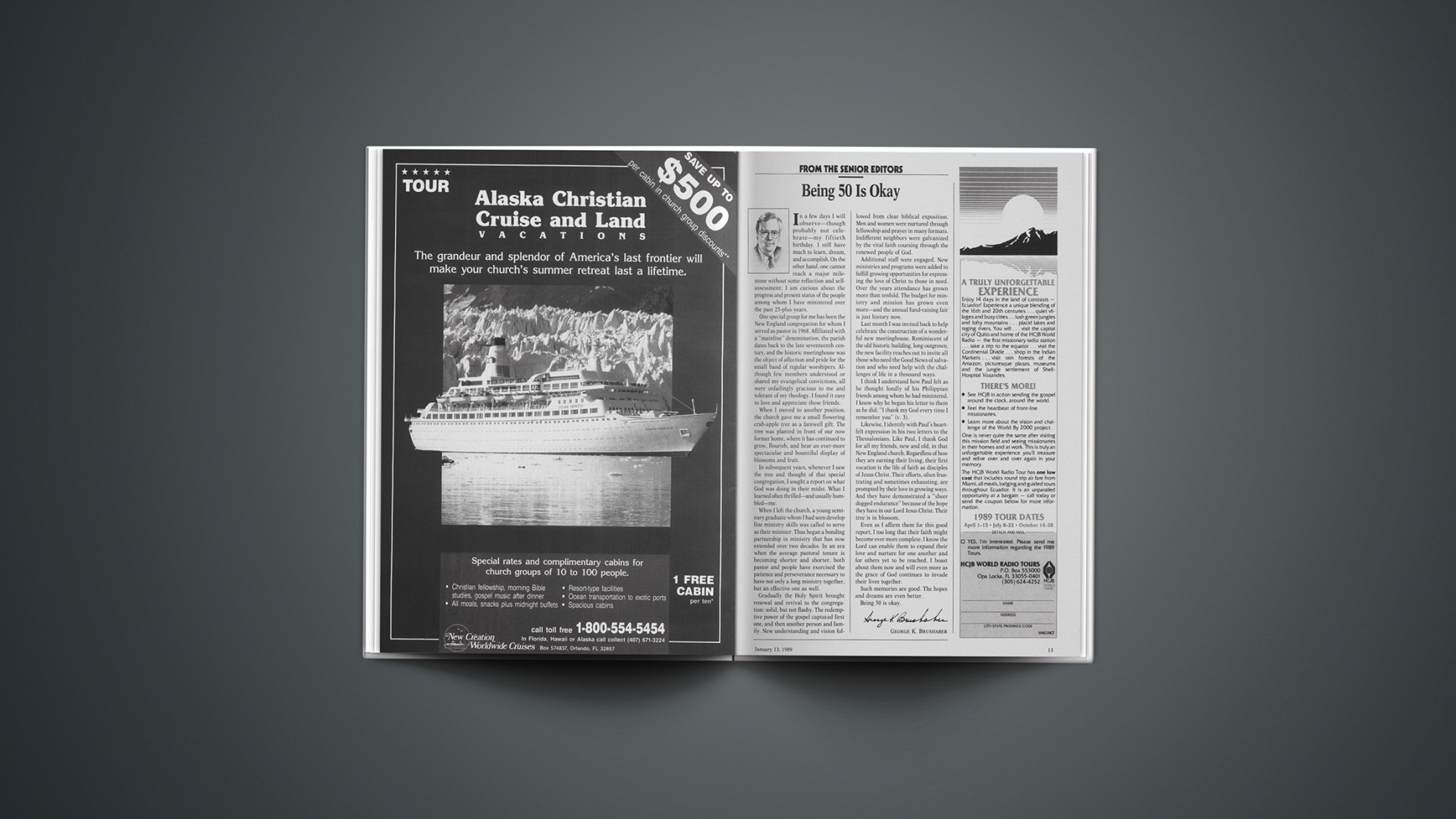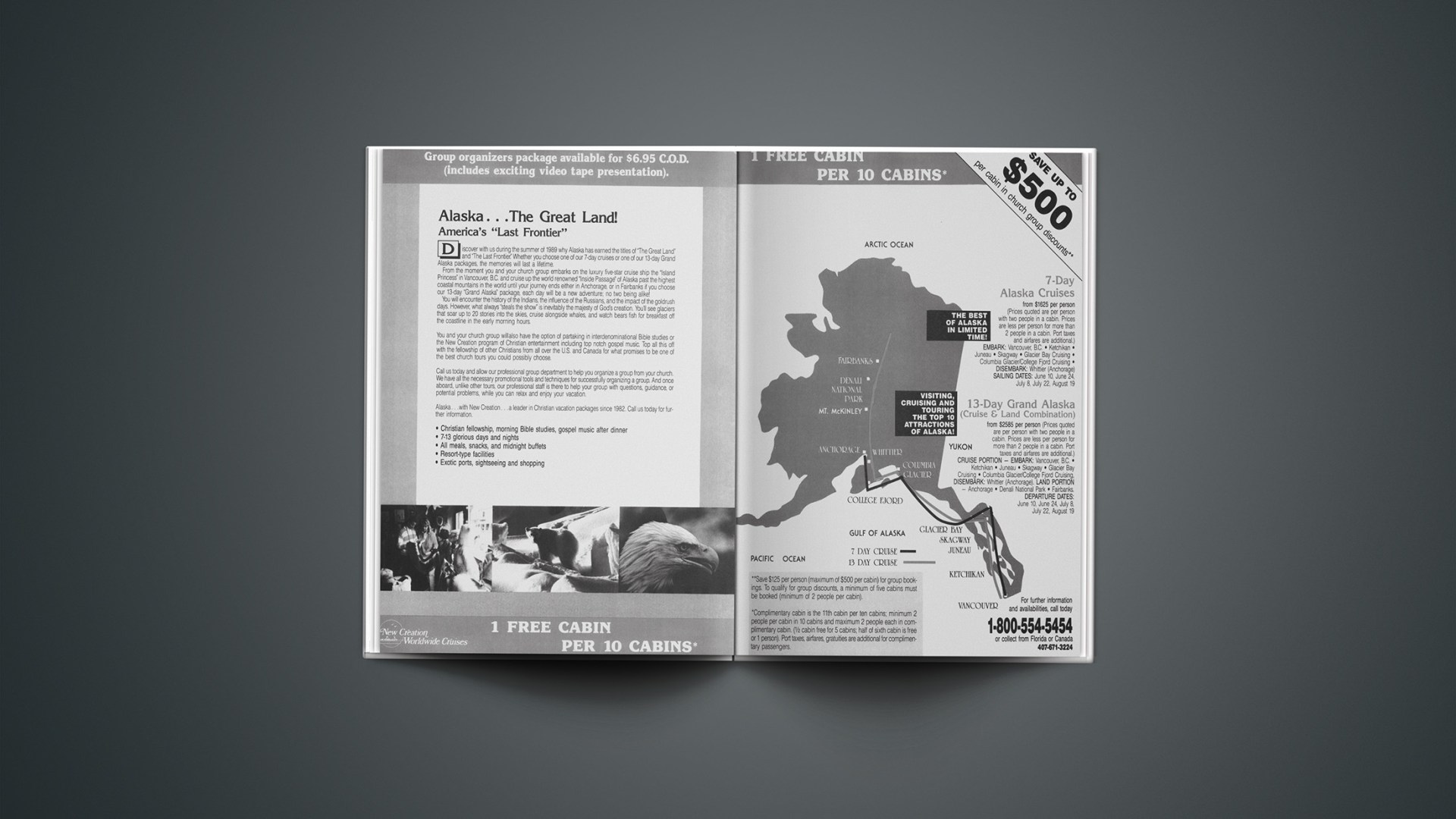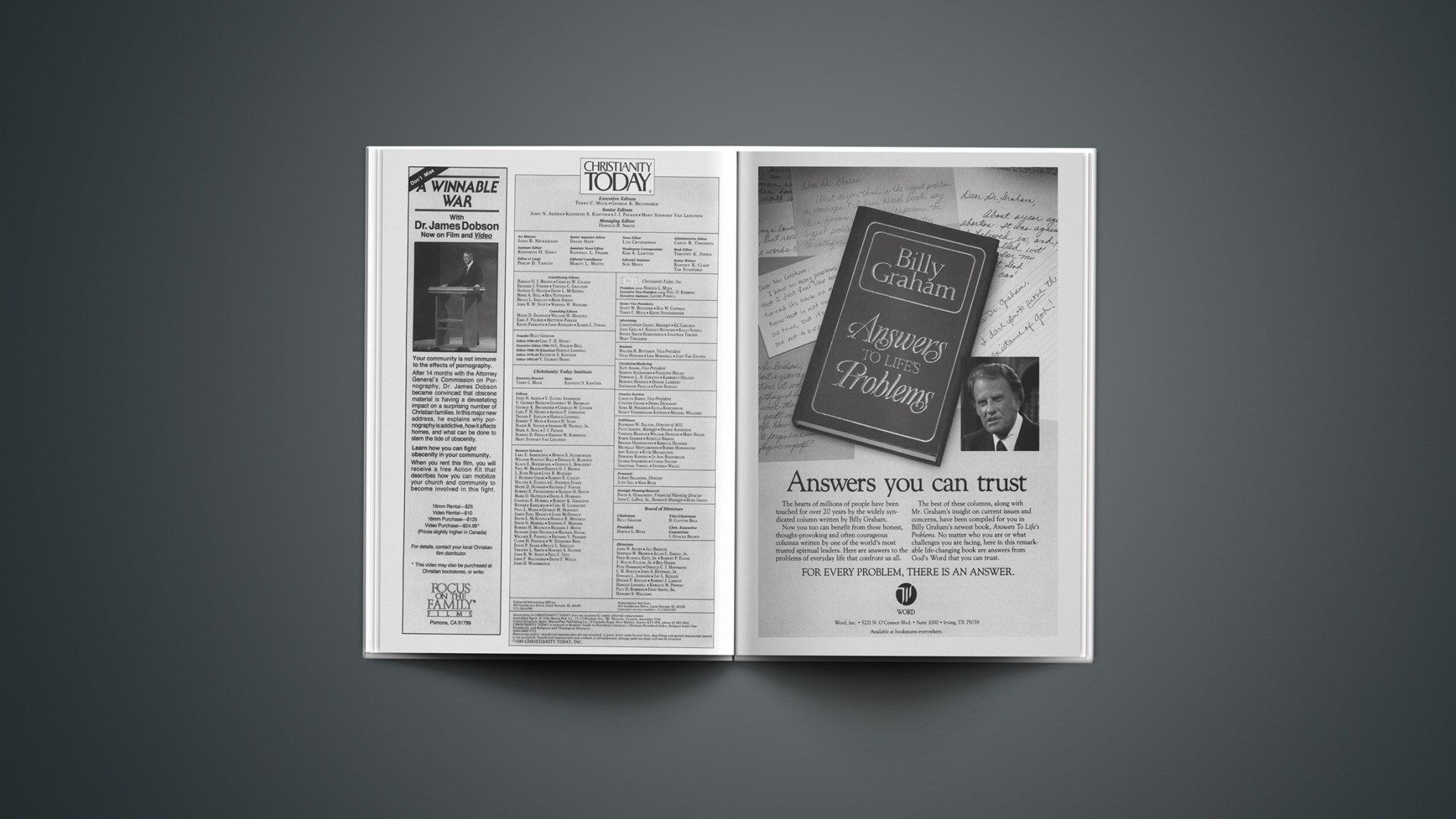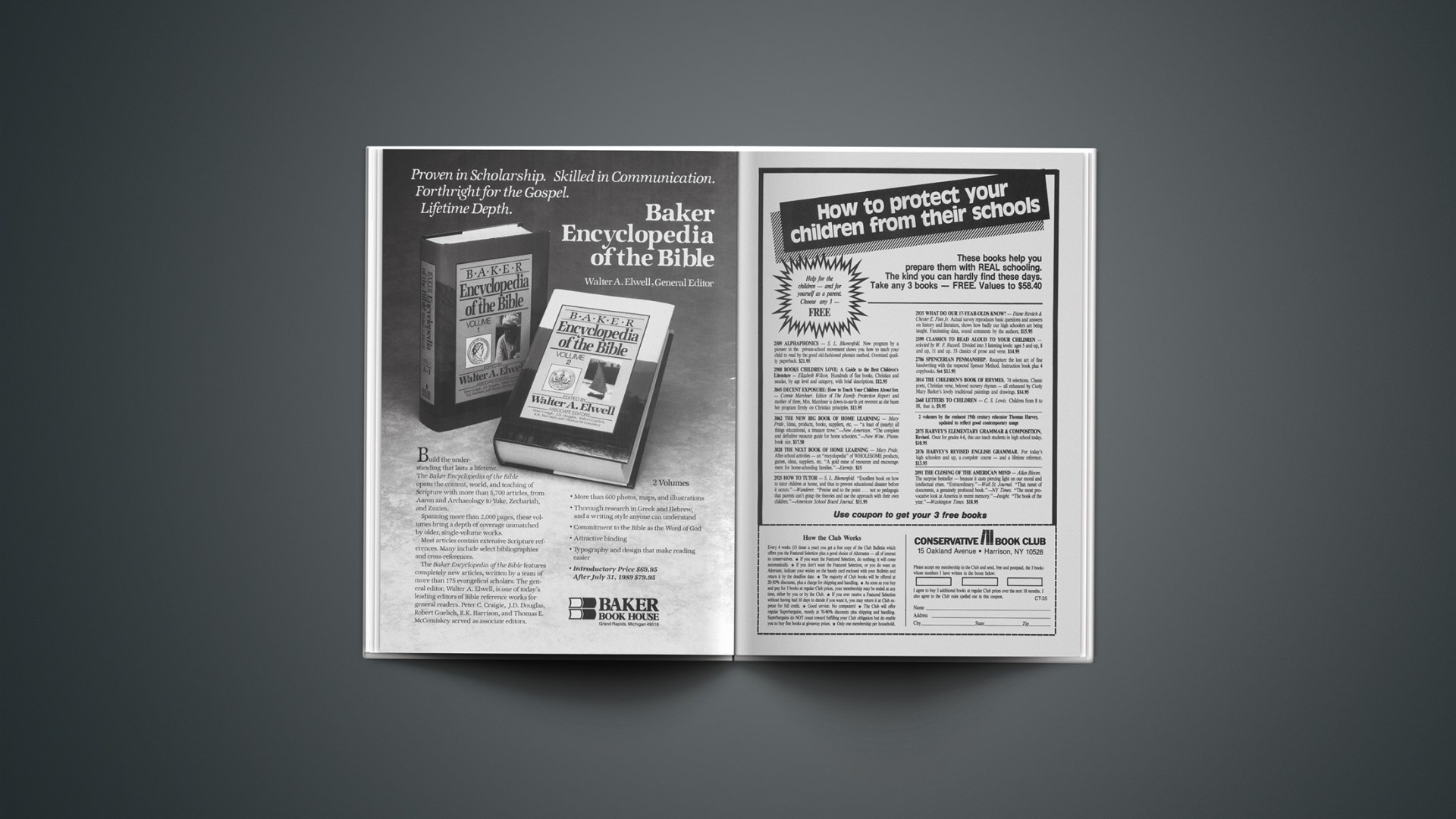A drive down Franklin Street in Aliquippa, Pennsylvania, is a joyless ride. The main thoroughfare in this depressed steel town 25 miles northwest of Pittsburgh is lined block after block with empty and boarded-up storefronts. The bleak faces of unemployed men populate the scene.
Further down the street, however, there is an incongruous splash of new color: the bright red door of All Saints Episcopal Church, and 12 repainted row houses, home to members of the Community of Celebration.
The Episcopal religious order, which originated in Houston and later moved to Great Britain and Scotland, relocated three years ago to Aliquippa. Its members share their possessions and salaries and live on a stipend of $160 each per month. And they have added more than fresh paint to the face of this city of 16,000.
“They’re certainly a group dedicated to their fellow men,” observes Syl Grecco, owner of Marsyl’s Dress and Bridal Shop several blocks east of All Saints Episcopal. “They’ve introduced Christian precepts to help people understand each other, the color of skin notwithstanding. They’re very loving people.”
The community was invited to the Pittsburgh area in 1985 by the local Episcopal bishop, Alden Hathaway, an evangelical who is quietly gathering Episcopal renewal groups into his diocese. “When I heard they were looking to leave Scotland for an industrial community somewhere in the West, I wrote to them and said, ‘That describes us,’ ” Hathaway said. “I said, ‘Would you not come and see if God is leading you to Pittsburgh?’ ”
In the end, God led the Community of Celebration to Aliquippa, a town in which the local hot-dog shop sells pancakes for 25 cents and where the economy is so bad the University of Pittsburgh chose it to study as a worst-case scenario.
Bill Farra, 43, the church’s senior warden, moved to Aliquippa with his family in April 1985 to contact and reassure the townspeople that his was a group that meant to stay. The group’s first order of business was to change a dilapidated funeral home into an office and to remodel 12 run-down row houses into homes.
It wasn’t long before the townspeople began to wonder just who these Episcopalians were—especially the ones with heavy British accents.
On The Wings Of Song
Farra plays guitar with a group of musicians, called the Fisherfolk, for the 80-person congregation of the Community of Celebration. The Fisherfolk conduct worship seminars all over the English-speaking world. Bill’s wife, Mimi, one of the main composers for the Fisherfolk, sometimes works out of her living room, which is home to a piano, a guitar, and piles of records, cassette tapes, and sheet music.
Betty Pulkingham, another Fisherfolk composer who also leads the children’s choir at All Saints Episcopal, says the music has drawn many neighbors to the church. “People tell us, ‘There is something different about your music,’ ” Betty says. “The only thing I can tell them is that we’ve a depth of commitment to each other.”
The haunting quality of the worship led by the Fisherfolk on Sunday mornings transforms the Eucharist from the Episcopal Book of Common Prayer into a flight of song. On one particular Sunday morning, Vicar Graham Pulkingham preaches on the star of the Magi. An Episcopal priest, Pulkingham attained fame in the early 1970s for making Houston’s Church of the Redeemer a show place for social action and charismatic renewal. He aims to do a similar thing in Aliquippa.
“Are we the star that can attract people to us?” Pulkingham asks. “It won’t start by preaching the gospel to the rich. But it will start when we preach the gospel to the poor. But we’ll have to embrace them, laugh with them, weep with them, and suffer with them. We may not see the fruit of it for ten years. But we are the star in this part of God’s heaven.”
Farra agrees. “Give this church grace in Aliquippa to catch the vision of being the star,” he prays aloud in the service.
Afterward, the Farras visit Jerry Holmes, who is a high school Latin teacher. Holmes is one of 13 “resident companions”—Christians from around the country who have moved close to the community but have not joined the order. Farra reasons that if enough people like the Holmeses—that is, people with jobs—move to Aliquippa, the town can re-establish a base for economic development. And the Holmeses are hooked on the group’s brand of worship and common lifestyle. This is the most intense, committed group of Christians they have encountered in a long time, the Holmeses say, and they want more.
Hatching New Jobs
The next day, Farra visits the Aliquippa Alliance for Unity and Development, a group of social agencies that aid the suffering, develop jobs, and rebuild the area’s economic base. Farra is chairman of the board. After dropping in at headquarters, he drives down the road to the Ohio riverfront, where the alliance sponsors the West Aliquippa Business and Technology Center, also known as “the business incubator.” After the alliance acquired a former bank near the riverfront, it recruited unemployed steelworkers to remodel the bank into a mall, in which fledgling businesses can operate until they become profitable enough to rent office space of their own.
Farra enters the building and greets the steelworkers-turned-construction-crew. The workers are four recovering alcoholics who had little experience in construction when they first were laid off. The group apprenticed the steelworkers to a contractor who performed renovation projects within the community, and the quartet has since landed more contracts, such as the one to remodel the former bank building.
Another hallmark of the Community of Celebration is its ability to bring black and white Christians together in the racially polarized area. In 1985, when NBC-TV officials were looking for a site to film for a Christmas segment on hope for the unemployed, they contacted the Community of Celebration. The community called on 100 townspeople from 13 black and white churches to attend a concert of Fisherfolk music. Filmed in a black church and televised Christmas Eve, the event was a first for Aliquippa.
Community of Celebration members claim they could never maintain this level of involvement without a community lifestyle reminiscent of the early 1970s—living together in households and placing salaries in a common pool. The religious order of 23 core-group members, along with one novice and two postulants, accepts married couples, singles, and children. To maintain a freshness in their Christian life, the community meets daily at All Saints Episcopal for morning and evening prayer. Many in the community are composers and musicians, and their main means of support is their music. Music is also the way they attract the townspeople in the group.
Change is slow in a region where people measure progress in decades and newcomers are rarely trusted. But the Community of Celebration has been successful so far in reaching the people of Aliquippa. Daniel Britza, mayor of Aliquippa, says the group has made a difference in only three years.
“They’ve done a lot of contacting people who are down and out, and they’ve helped in many ways,” Britza says. “They do what they do without making a lot of money. That has basically impressed people here the most.”
By Julia Duin, a religion writer for the Houston Chronicle.







